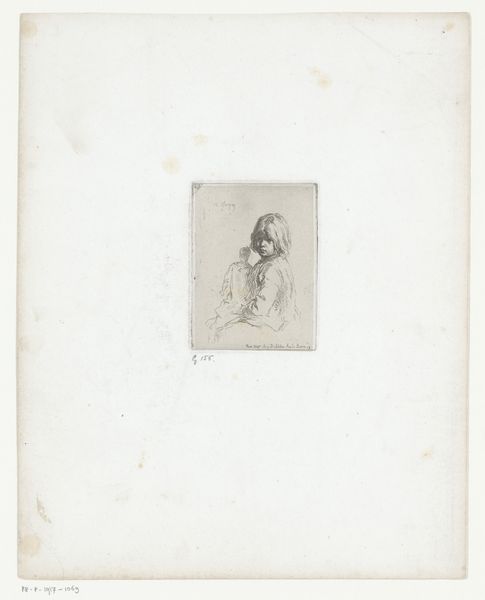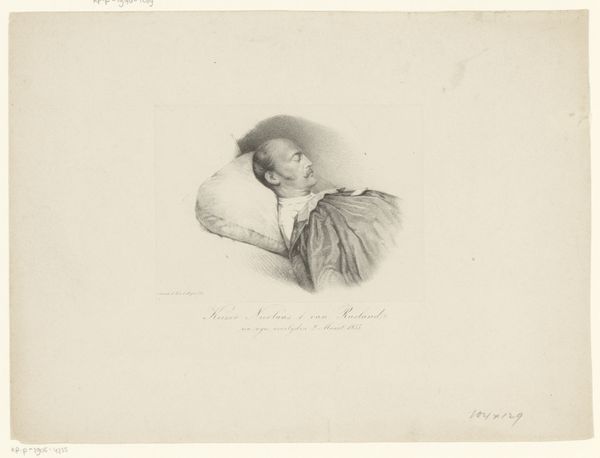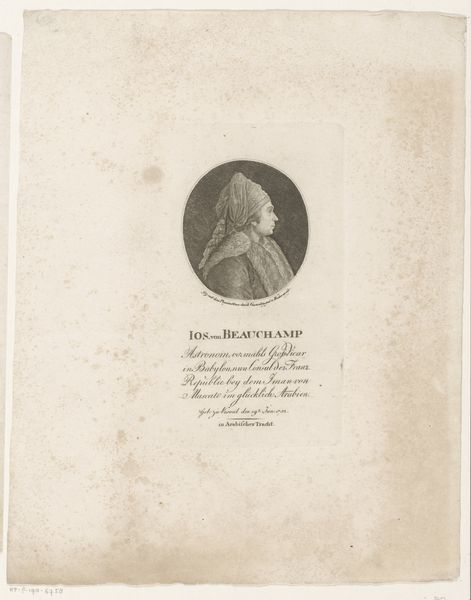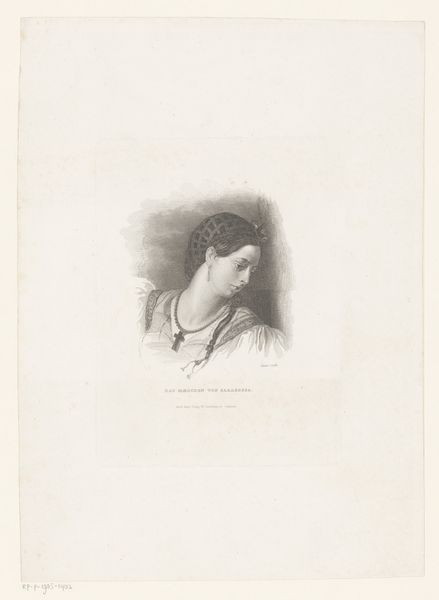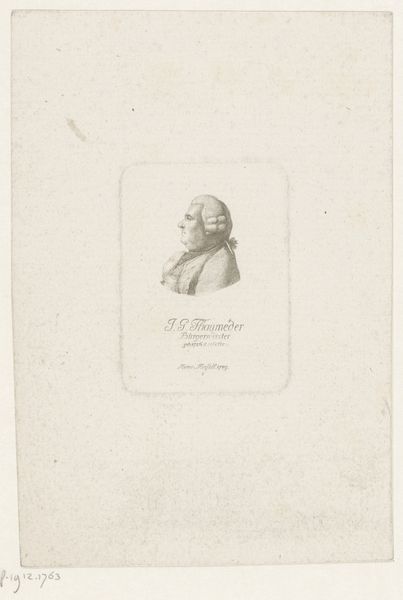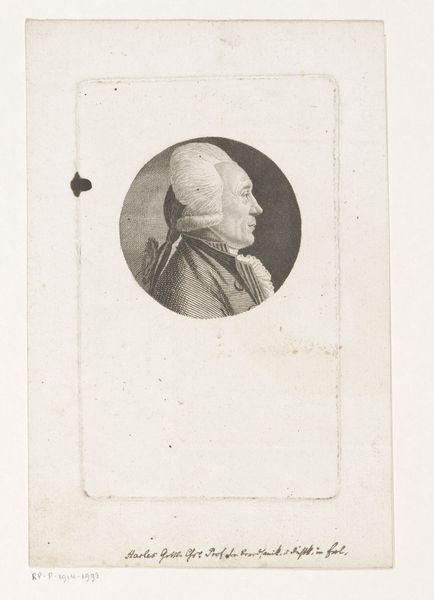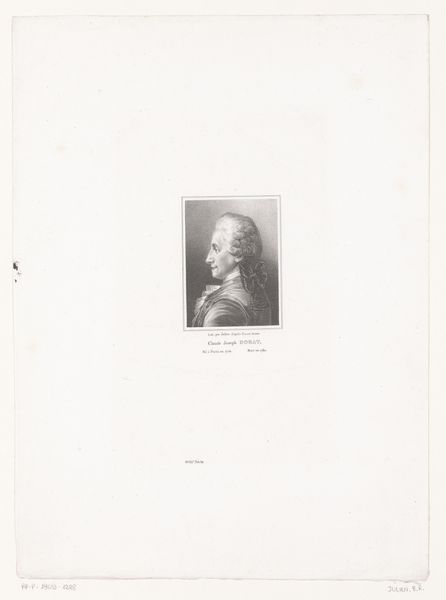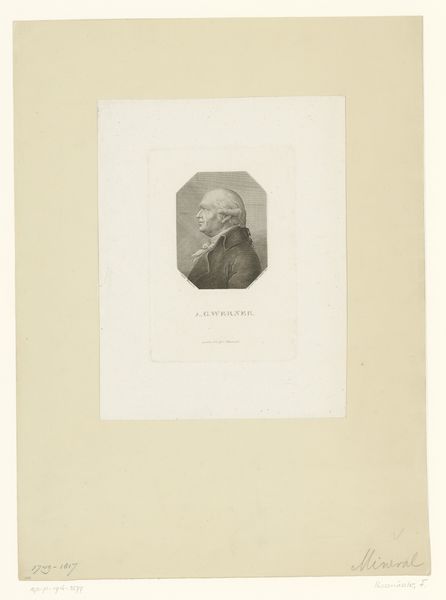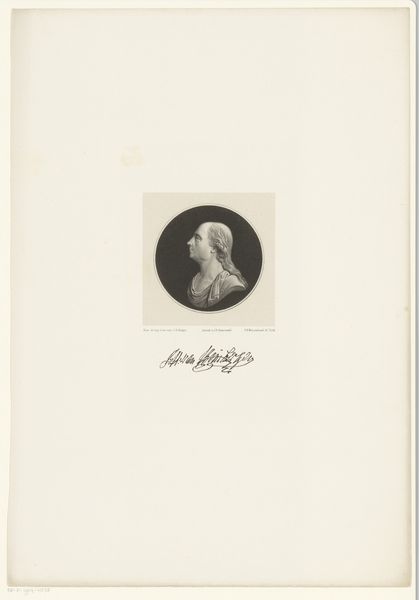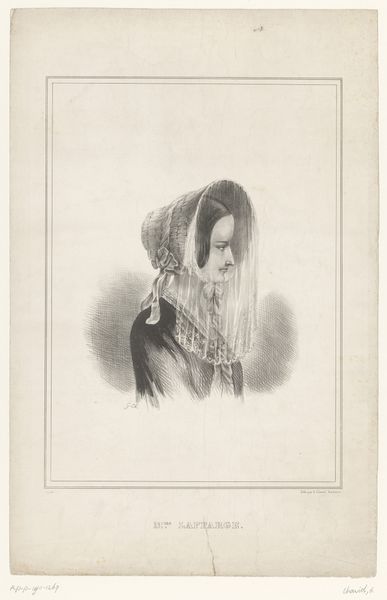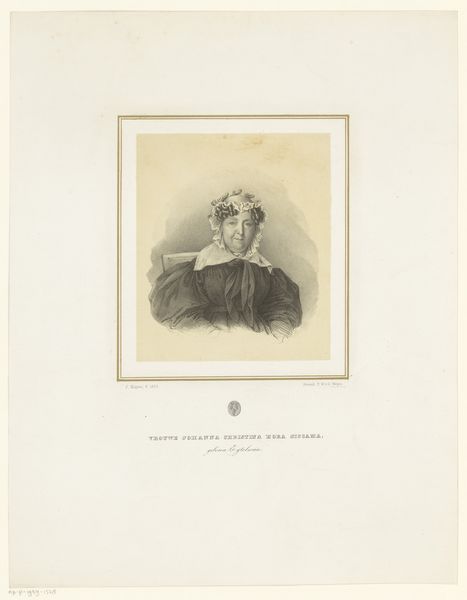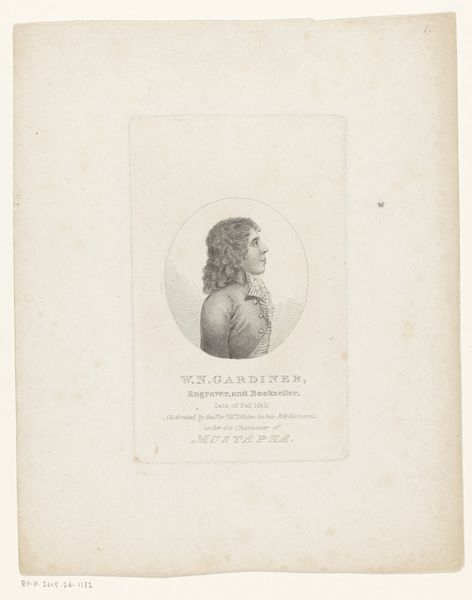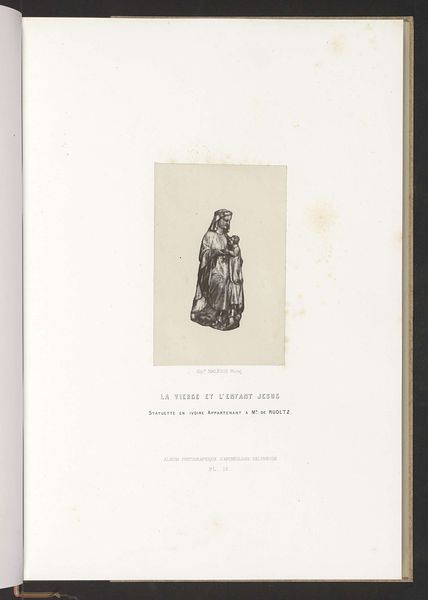
print, paper, engraving
#
portrait
#
neoclacissism
# print
#
paper
#
engraving
Dimensions: height 208 mm, width 131 mm
Copyright: Rijks Museum: Open Domain
Curator: Welcome! Today, we’re looking at an engraving from the early 19th century. It’s titled "Portret van baron Friedrich Melchior Grimm" and attributed to Ambroise Tardieu. Editor: Stark. That starkness speaks to me of power, formality... almost intimidating in its clean lines. Curator: Yes, it’s certainly an image designed to convey authority. Engravings like this, printed on paper, were key tools for disseminating images of important figures during the Neoclassical period. Grimm, identified as a “Critique et Philosophe” below his portrait, undoubtedly sought this kind of public presentation. Editor: Think about the labor involved, though! The skilled hand meticulously carving into the metal plate. The printing process itself, repeated again and again to spread this image of Grimm across Europe. The materiality, the print medium allowed his image to become a commodity, right? Curator: Precisely. Consider the context of this piece. Grimm was a well-connected figure in Parisian society. A print like this allowed his likeness to circulate amongst salons, libraries, perhaps even displayed in public spaces. Think about the role images play in constructing fame. Editor: And notice how Neoclassicism lends itself to this form of reproduction. Its emphasis on clean lines and idealized forms translates beautifully into the precise lines of an engraving. A bit ironic, isn’t it? Mass producing an “ideal.” Curator: Perhaps not so ironic. Standardization and idealization were, in a sense, two sides of the same coin in this era. And this wasn't merely about physical resemblance; it was about projecting a particular kind of persona. Look at his carefully styled hair, his clothing… all contribute to a carefully crafted image of enlightened authority. Editor: So it is about image, about projecting power through these calculated visuals and dissemination by industrial reproduction. I now see it as so much more than stark, clean lines: a meticulously crafted facade carefully produced and distributed, each copy contributing to Grimm's legacy, available for consumption, both literally and figuratively. Curator: Indeed, an interesting intersection of artistic technique, social status, and the politics of image-making. Editor: It’s easy to forget about the socio-political elements with beautiful lines. A wonderful reminder of art’s inherent, historical connectivity.
Comments
No comments
Be the first to comment and join the conversation on the ultimate creative platform.
